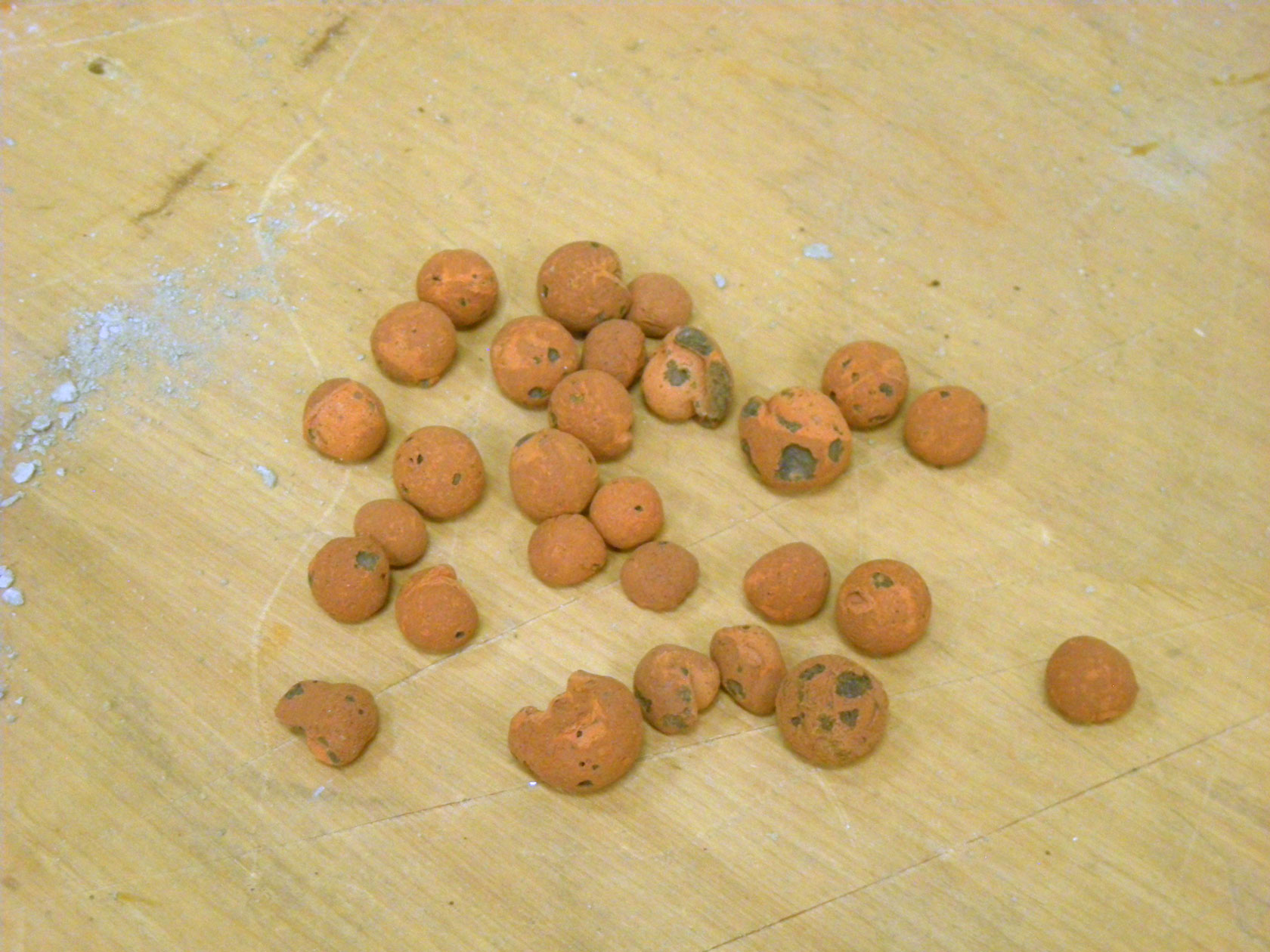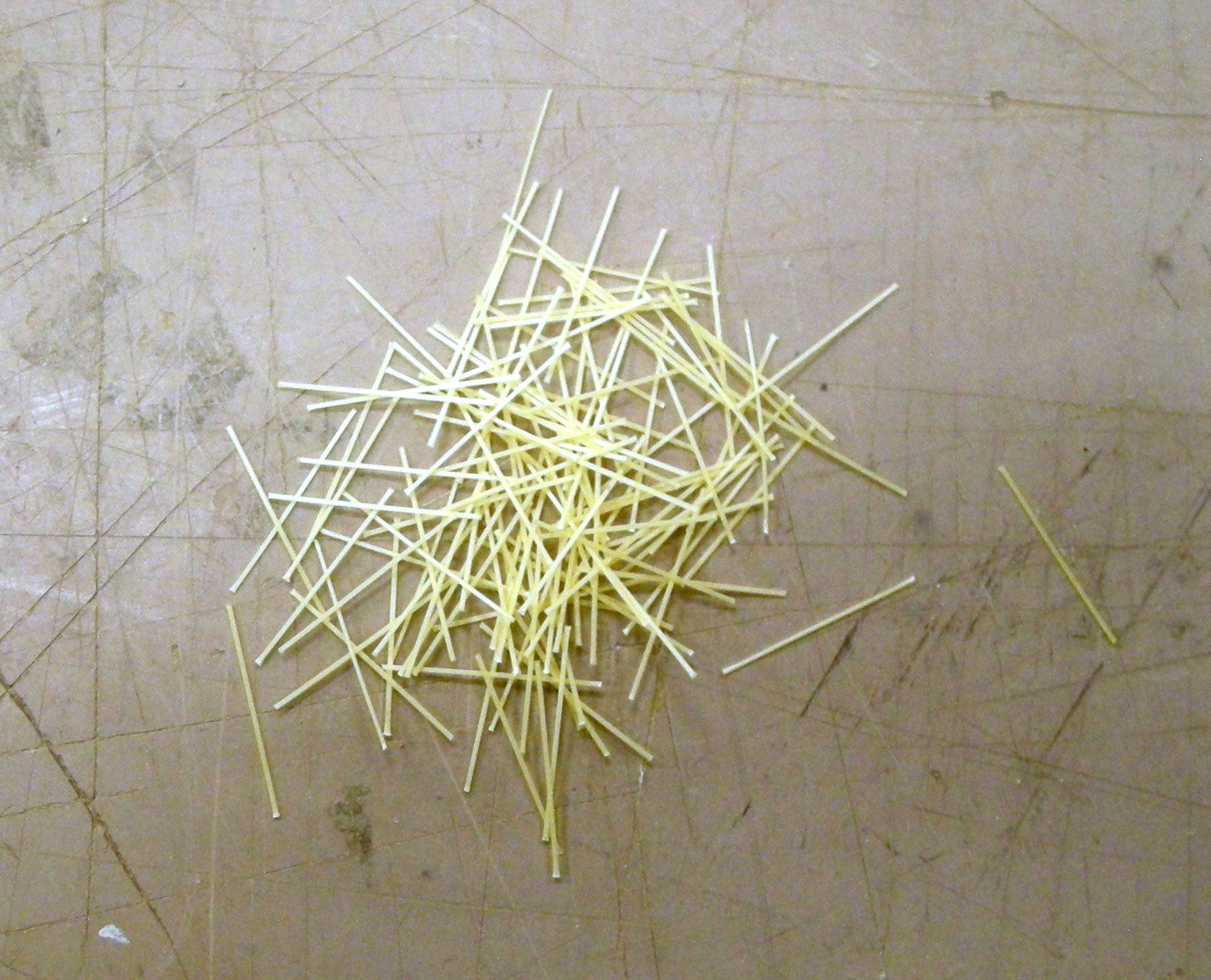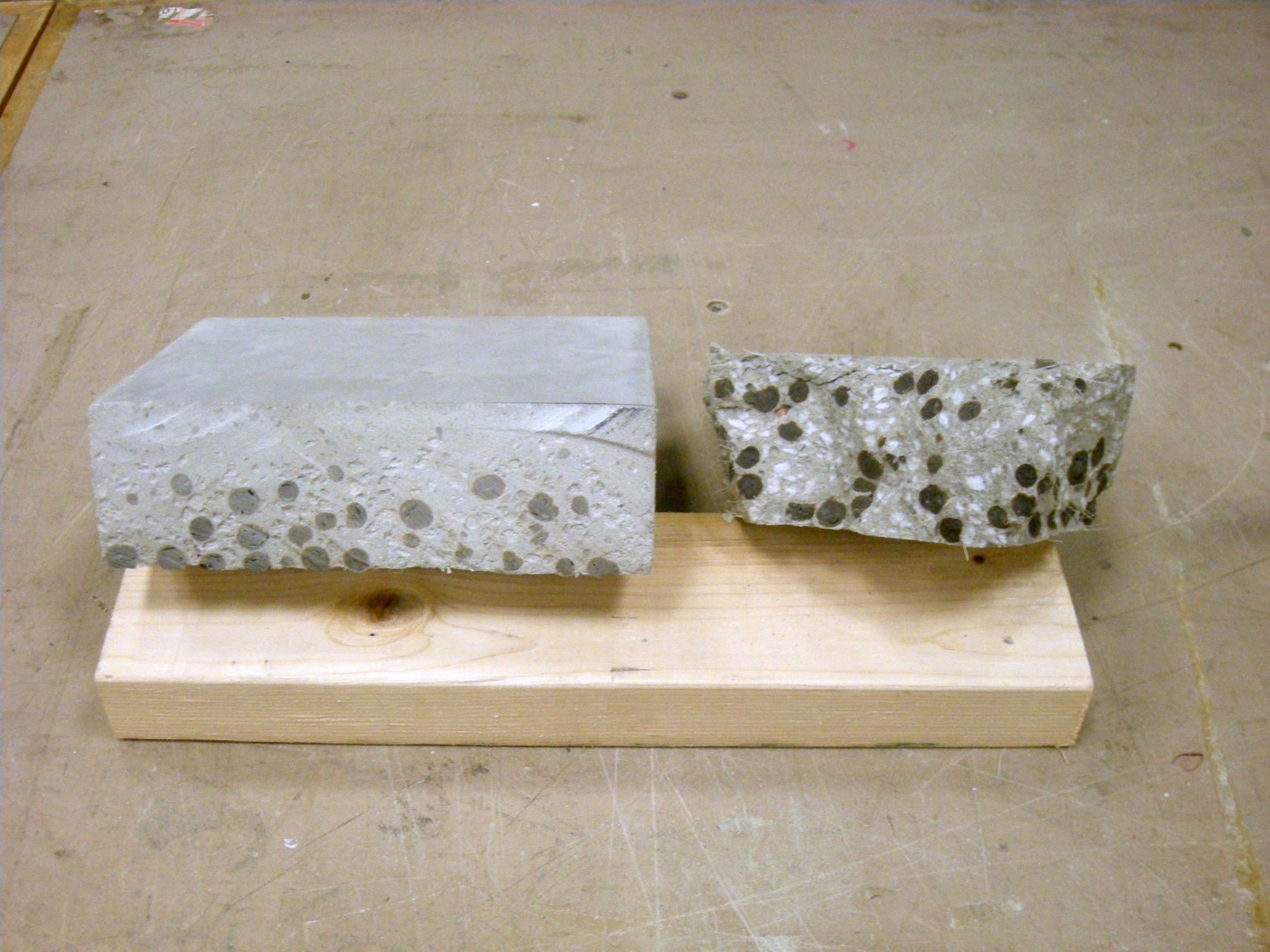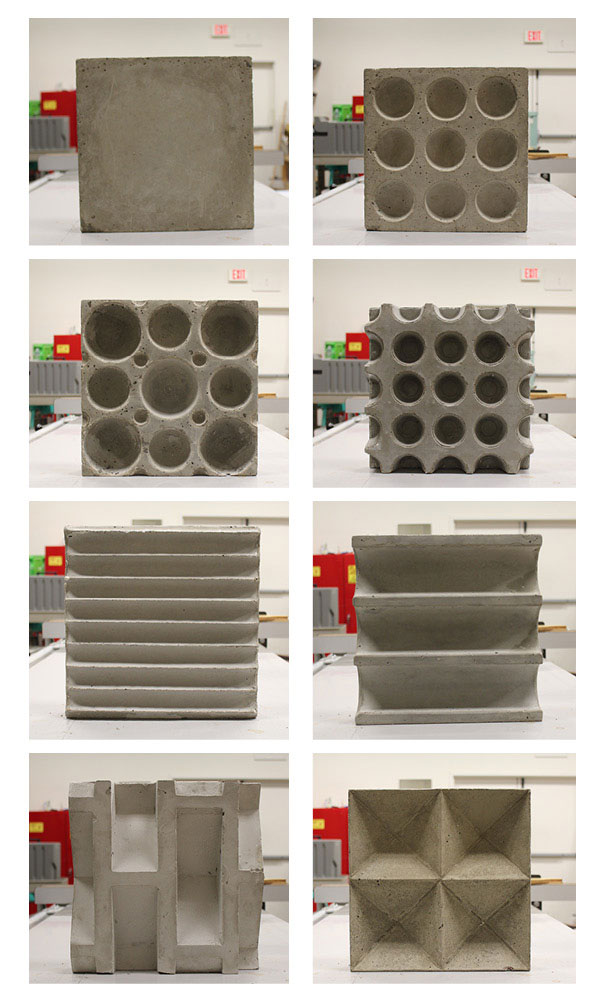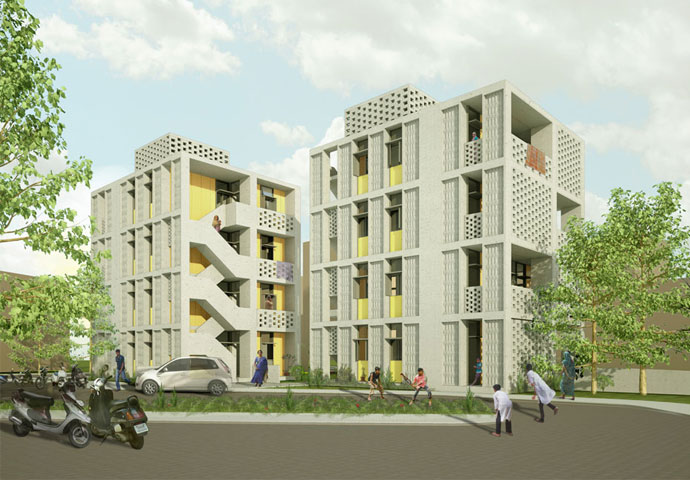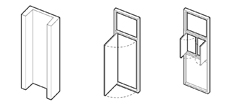Experiments in Concrete Casting
Expanded clay aggregate
Ideal Choice Homes is both a product and a process by which homes may be mass produced through a managed supply chain in India. This project leverages established knowledge of precast concrete to satisfy a market for “pukka” (permanent) construction. Ideal Choice Homes appears solid to sight and touch, similar to other permanent houses in India. But it is a clear departure from traditional Indian construction in that it is engineered for off-site manufacture, delivery, and on-site assembly.
As the concept for Ideal Choice Homes developed, it became clear that housing components needed to be lightweight enough to ensure that they could be lifted by laborers while still meeting the cultural preference for construction that looks and feels solid and achieving performance goals. It was necessary to determine how materials readily available on a manufacturing scale in India could reduce the weight of precast components. Aggregates like expanded clay and perlite are widely available, so we conducted a series of casting studies to evaluate and identify best practices in working with them.
We built mockups with five different lightweight aggregates, and a series of twelve mixes incorporating both conventional and lightweight aggregates. Each mix was cast to determine workability, finish, and dry weight. Perlite, vermiculite, foamed glass, expanded clay, and Elemix EPS Foam were tested. Additionally, we tried three types of PVA reinforcing fiber (sourced from Nycon).
One of three types of PVA fibers evaluated in the test mixes and prototypes
After evaluating the attributes of each material, new mixes were developed to improve the concrete's workability and finish and reduce weight even more. Our second mixes used a combination of lightweight aggregates. We cast two hybrid mix formulations incorporating expanded clay and perlite, and the better performing material was used to fabricate a 1:1 prototype wall panel. The prototype also demonstrated the effectiveness of using PVA fiber to replace steel reinforcement, which could be a feasible alternative depending on cost.
Results varied depending on what was cast: While the perlite/expanded clay fiber-reinforced concrete produced a high-quality, structurally sound, and durable cast, a perlite-based concrete was more successful for an “indented” panel, so called because of the indentations in its surface. Both tests demonstrated the potential of PVA-reinforcing fiber to provide comparable performance to steel in non-structural applications. Most importantly, the testing confirmed that we could achieve significant reduction (up to 30 percent) in a concrete material's dry weight, while maintaining the structural properties needed for durable precast components.
Perlite/Expanded Clay test samples
A second tactic we explored to reduce overall weight of the components was removal of unnecessary mass from the panel. A baseline solid and void pattern was established and cast in concrete to extrapolate its physical data and obtain craft knowledge for developing alternative forms. It was important to create options that would be easily reproducible with off-the-shelf products, so we focused on pure forms and patterns such as basic geometric solids and tessellations. We designed several options in a 3-D modeling program and determined their physical properties digitally with a Grasshopper script. The ten designs offering the greatest potential weight reduction and best aesthetics were selected for physical prototyping.
Casts using a range of off-the-shelf mold-making materials to remove mass
We made molds from off-the-shelf products like polypropylene balls, nylon and PETG pipe, plastic funnels, and plastic drinking cups. Pyramid, wedge, and egg crate shapes were fabricated from plywood, masonite, and foam. The selected forms were analyzed through KT-EWE, a custom Grasshopper script that performs solar analysis, to determine the amount of direct solar radiation gained by each void configuration. Full-height panels were tested in south and west orientations for comparison. Panels receiving less direct solar radiation in the summer months were considered beneficial. Surface area was computed to determine which panels could radiate out or flush heat during the night.
All of the prototypes weighed less than the 60 mm baseline panel, some by almost half. However, direct solar radiation grew for many of the panel prototypes, albeit by only a few percentage points. At least two of the panels had positive attributes for self-shading, primarily in the western orientation. Two patterns, the wedge and pyramid, beg further inquiry because of their reduced weight and potential thermal benefits.



